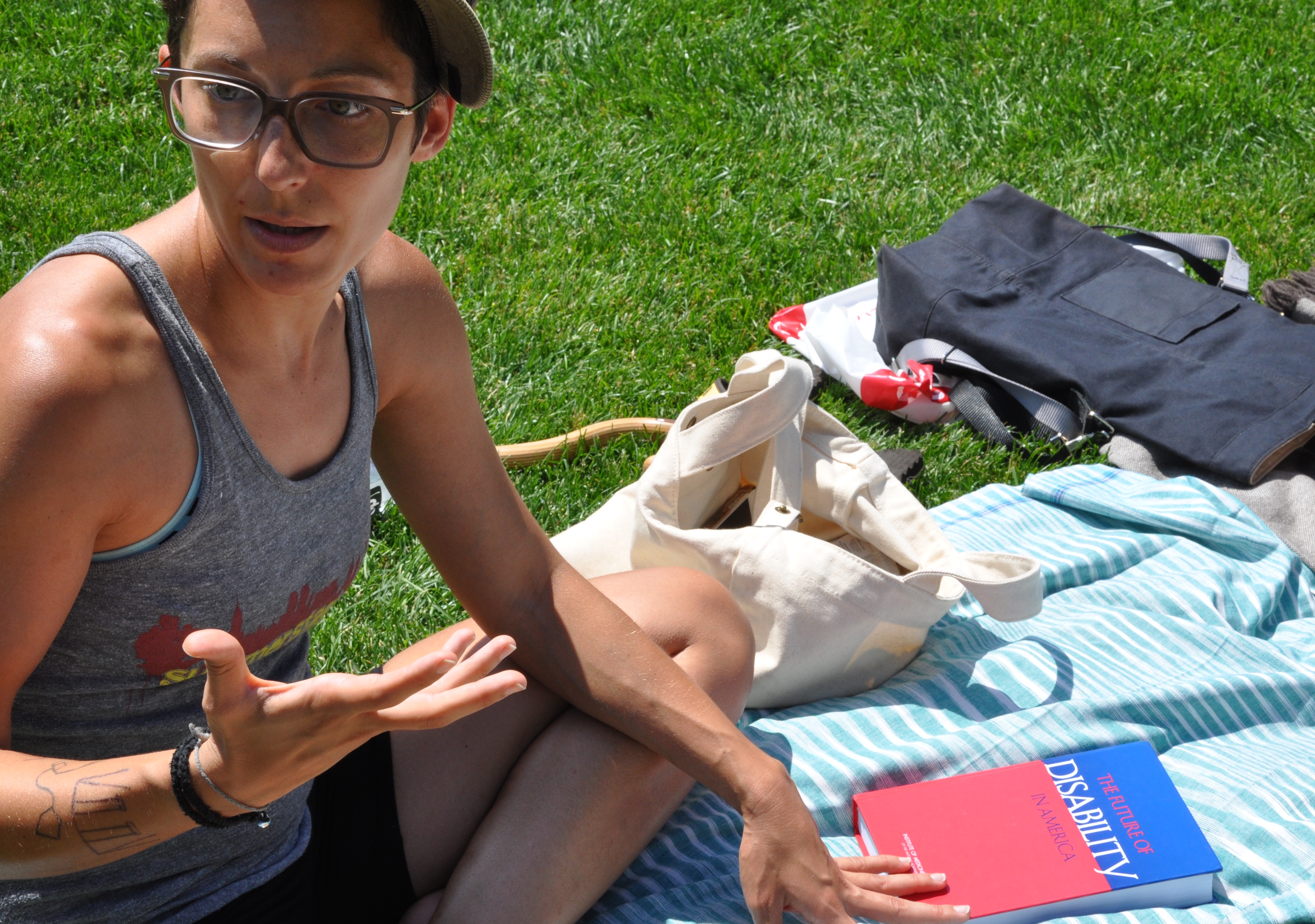
Liz Jackson writes about her experience as a cane user, among other things, on her blog: The Girl With the Purple Cane. She pointed me to this particularly strong post about the ways her cane functions not just as a technological object, but a cultural one too.
Like many people, she doesn't need this piece of gear for support every minute of every day. But she does need it in key situations, and she needs it just as often to convey a subtler set of messages about inhabiting a body in space where there are more or less standardized rules about seating on the subway, crossing the street, and so on. Here's Jackson:
Over time, it seems that I have developed a set of standards for when I do and don't use my cane. I don't use my cane when I'm walking around my apartment. If I am running a quick errand in my neighborhood, I don't use my cane. I never travel more than 3 blocks when I'm in my neighborhood, and I'm never gone for very long. Also, my gait doesn't get truly bad until about the 2-3 block mark. That's when my feet just give up on me.
But, Jackson says:
If I am getting on the subway, I always take my cane. Even if I will only be walking a short distance to and from the subway. So this means that when I have my purple cane, I am telling you a few things.
I am telling you that if the subway is full, I will gladly accept your seat. If nobody gives me a seat, my cane gives me the guts to ask you for your priority disabled seat. I am telling you that I am wobbly on my feet. I am telling you that when I say excuse me, I really mean it. I'm telling you there's a reason I am walking slowly through the crosswalk, so please don't honk. My purple cane says all that and so much more.
The whole post is a great meditation on technology as performance: sometimes we need to cue others around us about the ways our bodies may have needs that aren't immediately visible, that aren't what we're used to "counting" as disability—temporary, long-term, or somewhere in between.
Liz also wrote to me about a design she initiated with Walnut Studio to hold her cane on her bicycle—a form of mobility she can take up with ease, as opposed to walking. Having her cane with her at the end of her bike trips is important, but there's no obvious way to make these two bits of mobile gear go together. But these are great, right?
I'm as interested in these workaround hacks as any legibly high tech assistive gear.
More about Liz Jackson, including her campaign to get fashion monolith J. Crew to manufacture smart-looking canes, on her web site.
Related: A new golden age for cane design? And The White Cane as Technology: An Interview with Georgina Kleege. And a vintage spy cane.